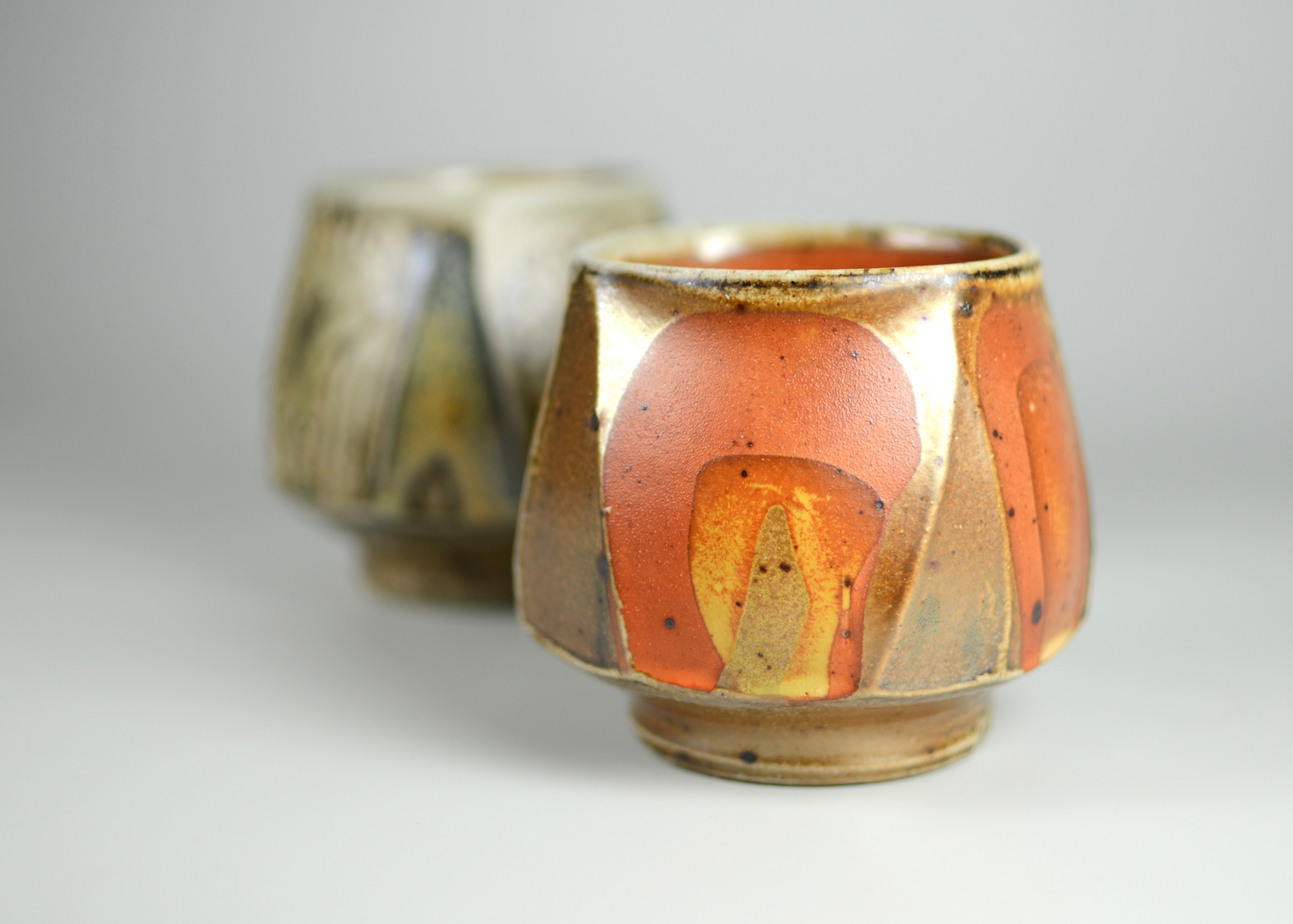Micki Schloessingk // Earth, Fire and Salt
Earth, Fire and Salt opened at the Mission Gallery in Swansea in September 2016. It toured to Ruthin Craft Centre, the Ceramic Gallery at Aberystwyth Arts Centre, Llantarnam Grange Arts Centre and Craft in the Bay.
Alex McErlain's essay from the publication accompanying the exhibition:
Micki Schloessingk is one of an internationally renowned group of potters who choose to fire their kilns with wood. She cites Sandy Lockwood from Australia and Linda Christianson from America as her soulmates and this international trio share friendship as well as an ability to make work of elegance, sensitivity and intrigue. Micki chose to fire with wood almost from the beginning of her career. She was not only attracted to the characteristics of wood firing but to the directness of a natural approach to making and firing pots. With deceptive simplicity, wood firing is both physically demanding and intellectually challenging. In order to harness the elusive qualities that she desires, Micki must work with the myriad changes that occur during firing. There is no text book to refer to with a wood kiln, the potter must adapt to the erratic behaviour of burning wood and its impact on precious work within the chamber. Micki’s wood fired pots are further enhanced through the introduction of salt during the firing which develops the unique glazed surface, colour and textures she is renowned for. Her work is further characterised by a sensitivity to touch, strength in form and the potential to creatively engage the person who may ultimately use it.
Sensitivity is one of those elusive aspects of making pottery that is critical to success. It connects to the way the potter considers detail in form, perhaps the manner in which a rim undulates without looking inept; or the way that a gentle indent has been made in a cup without it looking accidental. Perhaps most of all, in the attitude to every aspect of cajoling an elegant form out of a seemingly lifeless lump of clay. Sensitivity is also prevalent in Micki’s creative workspace and is key in forming the ‘circumstances from which good work may emerge’, as the potter Richard Batterham, once observed.
The strength in the form of her pots is fundamental in producing an underlying structure to allow the rather unpredictable firing process to integrate and enhance the surface. Without clarity of form the surface would quickly lose its visual and tactile impact. Strength is also apparent in decisions about shape where, for example, a sensibility to the attachment of a handle which fits the human hand also elegantly wraps itself into the form of the pot.
Her work has a slight air of mystery, it suggests rather than dictates ways of using and allows another person to develop the creative potential inherent through use. How satisfying to fill one of her basket forms with food, encouraging tactile interaction when the pot is passed around the dining table. Similarly a large jug in use will often require a two handed grip bringing instant tactile response. That integration of form and surface with sensitivity throughout her making, transfers to human interaction when you use one of her elegant pots.
As Micki was preparing for this significant exhibition of her work she was aware that presenting a glimpse of the very best of what she has been making for the past year will be as important for her as for the exhibition visitor. To gain an understanding of what she makes it is important to observe how the work is constantly evolving within its own boundaries. Micki has been making pots for a long time but the work never stands still. Each firing presents a moment of evaluation and drives her instinct to do better, to bring new emphasis and sometimes to recognise the need for change. She is still learning about the potential of her kiln and the differing opportunities it opens up for creative playfulness. My enquiry about her recent investigations making pairs of bottle forms, prompted her to comment ‘these bottles are also expressive, they are something to do with conversations, and the pots excite me and remind me of people.’ This relatively new work takes advantage of the area of the kiln that is closest to the wood fire, almost in the firebox itself. Other tall bottle forms are placed behind the bag wall, an area that gets tremendous heat, salt and ash. Micki uses these pots as protectors for work that sits behind them.
In complete contrast to this risky excitement Micki has another item in her repertoire which is rarely seen outside of the studio. She makes spoons by modelling the clay in the palm of her hand. She commented ‘the spoon making is always incredibly calming and nurturing to me, so that feeds a very vulnerable part of me, it’s not so visible in my pots’. The spoons seem to represent not only that personal contemplative need but also an opportunity to have complete creative freedom from the everyday demands of pottery making. Her spoons are very beautiful, tactile objects and epitomise the care and attention that she puts into even the humblest of pots she makes, intended to enrich the lives of others.





